
 IJCP Editorial Team
IJCP Editorial Team
Stomach Cancer: An Overview
Stomach cancer develops when cancerous cells grow within the stomach lining. Also known as gastric cancer, stomach cancer can appear in any part of the stomach. However, the most prevalent site for stomach cancer is the central part of the stomach called the stomach body. The diagnosis of stomach cancer is challenging during preliminary stages, as it often remains asymptomatic. As a result, it frequently goes undetected until it spreads extensively.
Causes and Risk Factors associated with Stomach Cancer
Stomach cancer happens when tumor cells start to grow in the stomach lining triggered due to intake of carcinogenic substances, thus disrupting the normal functions of the organ. The various factors that elevate the risk of stomach cancer manifestation include:
H. pylori bacterial infections
Polyps in the stomach
Lynch Syndrome
Li-Fraumeni Syndrome
Obesity
Old age
Male gender
Smoked food
Lack of exercise
Smoking
Eating lots of processed food
Frequent consumption of meat, especially undercooked.
Consuming alcohol (at least three drinks per day)
Symptoms of Stomach Cancer
According to the American Cancer Society, stomach cancer often has no early indications or symptoms. As a result, people frequently don't notice any abnormality until the cancer has advanced. However, some of the general symptoms linked with stomach cancer are:
Recurring heartburn
Loss of appetite
Constant bloating
Indigestion and frequent burping
Early satiety
Excessive exhaustion
Persistent abdominal pain
However, these symptoms may be indicative of other clinical conditions like a peptic ulcer or an infection, which can make the diagnosis difficult. Therefore, healthcare professionals recommend that if an individual has such symptoms for a prolonged time, it is crucial to consult a doctor immediately. In addition, people at a high risk of developing stomach cancer should undergo a screening test.
Symptoms of advanced or metastatic stomach cancer may include:
Vomiting
Nausea
Bloody stools
A lump on the upper part of the stomach
Jaundice (if cancer affects the liver)
Idiopathic weight loss
Types of stomach cancer
Depending on the preliminary site of the cancerous growth, stomach cancer can be classified into the following types:
Adenocarcinoma. Cancer starts in cells that produce mucus. It is the most common type of stomach cancer.
Gastrointestinal stromal tumors (GIST). Cancer starts in nerve cells of the wall of the stomach and other digestive organs.
Carcinoid tumors. Cancer starts in the neuroendocrine cells.
Lymphoma. Cancer starts in immune system cells.
Stages of Stomach Cancer
The stage of stomach cancer indicates the extent to which cancer has spread throughout the body and can be categorized by the TNM system based on three factors:
T category: The size and area of the tumor.
N category: The extent to which cancer has spread into the lymph nodes.
M category: Metastatic spread of cancer to other parts of the body.
The results from each category are combined to assign a stage from 0 to 4. A lower number indicates that the cancer is at an earlier stage.
Stage 0 – In this stage, only the surface of the stomach lining has abnormal or cancerous cells, but cancer has not spread to the lymph nodes or other body parts.
Stage 1- The tumor has spread into the stomach's deeper layers. Cancer may have spread to one or two lymph nodes surrounding the stomach but not to other distant body parts.
Stage 2 - Cancer has spread to the lymph nodes and has reached more profound layers of the stomach but is confined to the stomach.
Stage 3 - The tumor has spread deeper into the stomach layers and possibly into nearby organs. Cancer most likely spreads to the lymph nodes but not other body parts.
Stage 4 - Cancer, at this stage, has spread to distant body parts such as the lungs, brain, or liver.
Diagnostic Techniques and Screening for Stomach Cancer
The first and foremost step to diagnosing stomach cancer is a physical examination. The doctor may examine the person's physical condition and check for any abnormalities. A stool blood test may be carried out to look for possible stomach bleeding. If the doctor suspects the presence of stomach cancer, additional diagnostic tests may be performed, which include:
Upper GI endoscopy
Biopsy of the upper gastrointestinal tract
CT scans & X-rays
Barium Swallow – In this test, a barium drink is given to the suspect, which makes a coating on the walls and linings of the stomach and esophagus. It is followed by a series of X-rays indicating cancerous cell growth within the stomach.
Serum Pepsinogen - It measures the levels of pepsinogen in the blood. A low level indicates chronic gastric atrophy, leading to gastric cancer.
Treatment and Prevention of Stomach Cancer
Treatment options and recommendations vary depending upon several factors, such as type and stage of cancer, possible side effects, and the patient's overall health condition. Generally, a combination of treatments is used to treat stomach cancer, followed by palliative care and lifestyle modifications. The most recommended treatments for gastric cancer include:
Radiation therapy
Immunotherapy, which boosts the patient's immune response
Surgery, which is usually laparoscopic gastrectomy
Certain guidelines have been laid down to lower the risk of stomach cancer:
Eat plenty of fruits and vegetables. Include fruits and vegetables in every meal every day.
Reduce the amount of salty and smoked foods.
Stop smoking, as smoking increases the risk of stomach cancer and other types of cancer.
Be aware of the family history.
People with high risk should go for screening tests as they can detect stomach cancer before it causes symptoms.

IJCP Editorial Team
Comprising seasoned professionals and experts from the medical field, the IJCP editorial team is dedicated to delivering timely and accurate content and thriving to provide attention-grabbing information for the readers. What sets them apart are their diverse expertise, spanning academia, research, and clinical practice, and their dedication to upholding the highest standards of quality and integrity. With a wealth of experience and a commitment to excellence, the IJCP editorial team strives to provide valuable perspectives, the latest trends, and in-depth analyses across various medical domains, all in a way that keeps you interested and engaged.




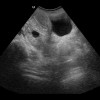
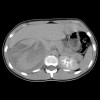




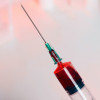
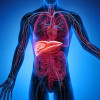
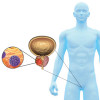


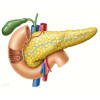
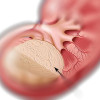
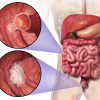


Please login to comment on this article